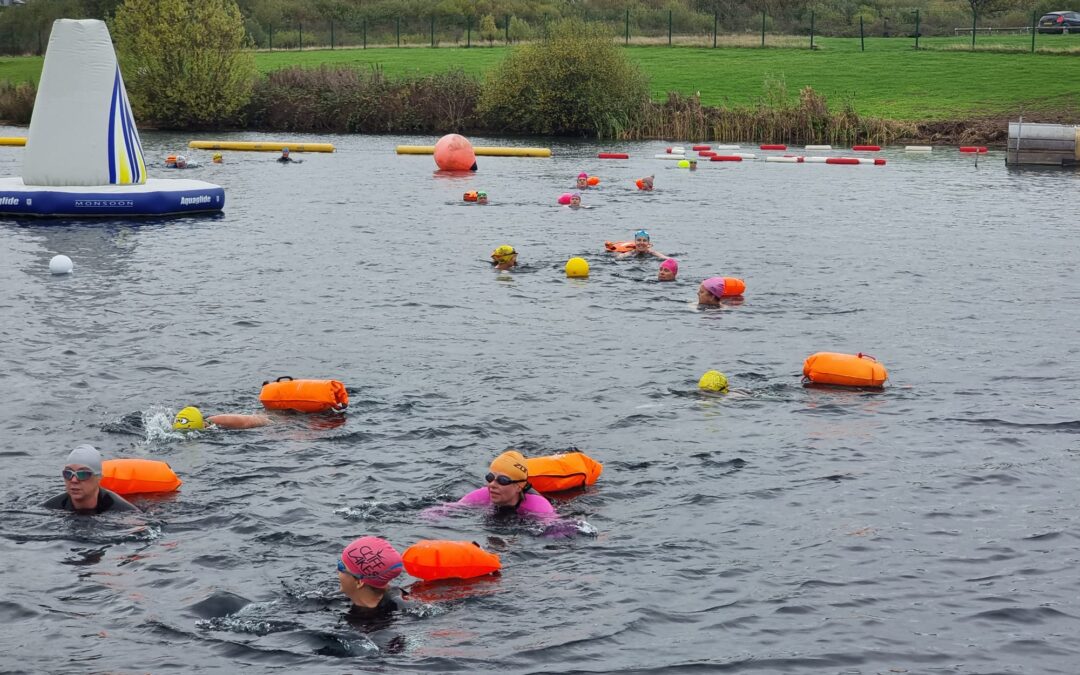Dan Earthquake who has considerable experience in cold water swimming and has put together this advice to help us all enjoy this experience safely. We require everyone taking part to read before they commence cold water swimming.
Why swim outdoors throughout the winter? I believe that it does the circulation a lot of good. It burns a lot of calories & is very good for injuries, new or old. For those wanting to tackle big distances or early season races, my experience is that persevering from October to May gives an advantage of just four to six weeks over those who stayed indoors.
Swimming in cold water is not a magic trick a gifted few performs. The ability to survive in cold water is a result of progressive conditioning, an acquired skill. Regular practice improves the endurance of the body & it is not something that should be rushed.
Usual problems that people encounter swimming in the cold are:
- Lack of coordination
- Pain in the fingers
- Speech impediment
These are the early signs of Hypothermia. Winter swimming will extend your tolerance to the cold but not eliminate it altogether. Therefore, it’s essential to be sensible & realistic in approaching training. Before entering the water, everyone must assess their current ability & experience against the prevailing conditions.
The difference in temperature on the skin on immersion is always the most challenging part of the winter swimming experience – over time this discomfort reduces.
- Concentrate on maintaining easy normal breathing, use large powerful strokes to move rather than short ones & don’t have too much expectation.
- A short immersion that can be repeated is better than a long one that discourages trying again.
This will be my fifteenth winter of swimming outdoors. I generally find that the initial discomfort of the change of temperature passes six seconds after I immerse my head. This has reduced considerably over the years. The following minute is the measure which decides how long I will swim.
- I count my breaths as I start swimming. If I get to twenty & I’m not entirely comfortable, I won’t be pushing myself too hard. Usually, I find I’ve forgotten to carry on counting which means I’m enjoying myself – when it stops being fun, I’m on my way to the exit.
- Whilst swimming I flex my toes on every kick & scrunch my fingers on the recovery phase of the stroke (I swim face in front crawl). This keeps some circulation to my fingers so I’m able to walk out & dress myself after the swim. The body will shut down any extremities it feels are unnecessary to divert warmth to the core functions. Swimmers on their second or third winter often find their fingers & toes hurt more than before. I think that this is because their bodies have become more efficient at adapting to the cold.
- If you can’t dress yourself on exiting the water or smile at your friends, you’ve done too much. Better to walk out happy ready for next time than to feel unwell.
- There is a temptation to go straight to the shower – avoid this because the hot water brings the heat away from the core, which can make you feel worse.
- Instead, get out of the wet gear, dry off swiftly & put on lots of layers.
- Keep your swim cap on until it can be replaced with a woolly hat (or bowler if you’re stylish like me) & drink a warm drink.
- Eat some high-energy food like chocolate.
- A brisk walk or run at this point is ideal. It shouldn’t take long to warm up than it did to get cold, so if you swam for twenty minutes & it takes an hour to feel better, the time immersed was too long.
- If the walk or run is not appealing, sit in a car with the heater on with more layers around you. Avoid the shower or bath until much later when the extra layers feel uncomfortably warm.


